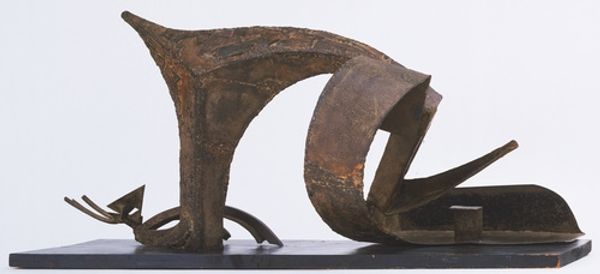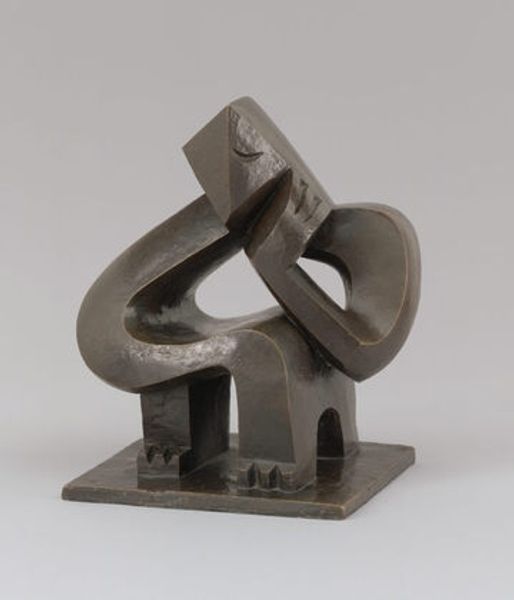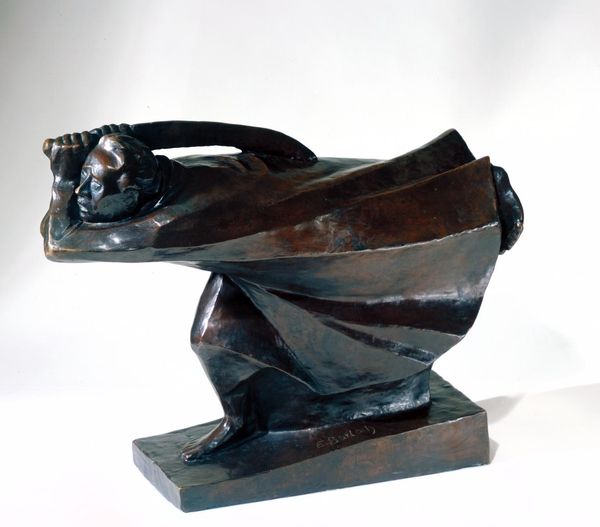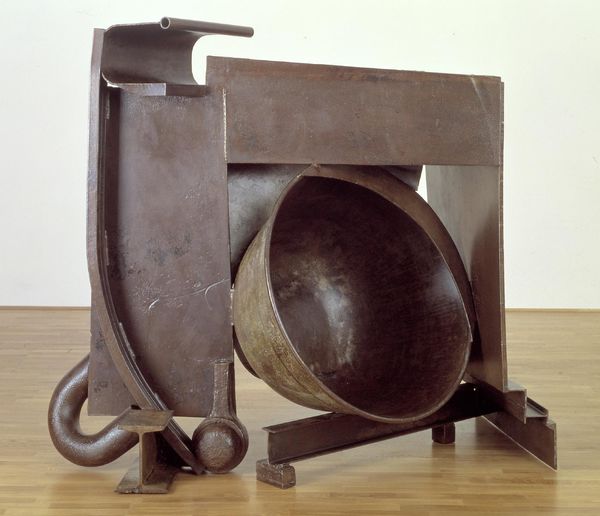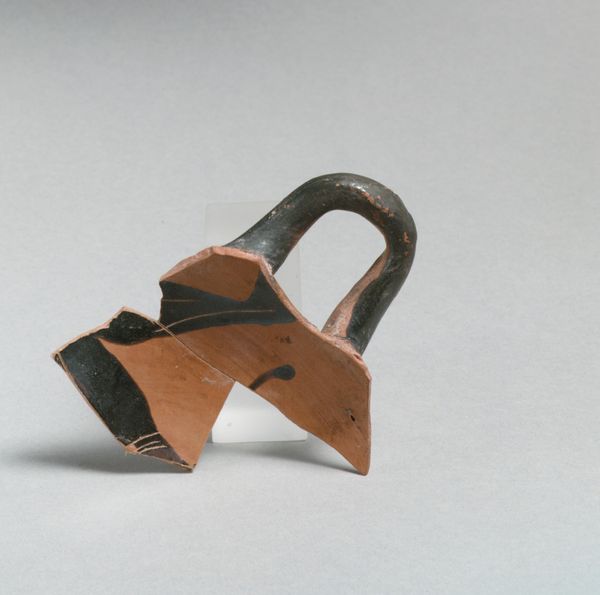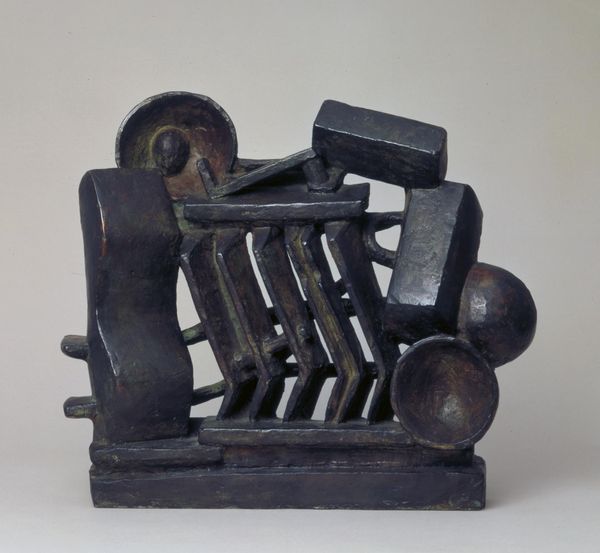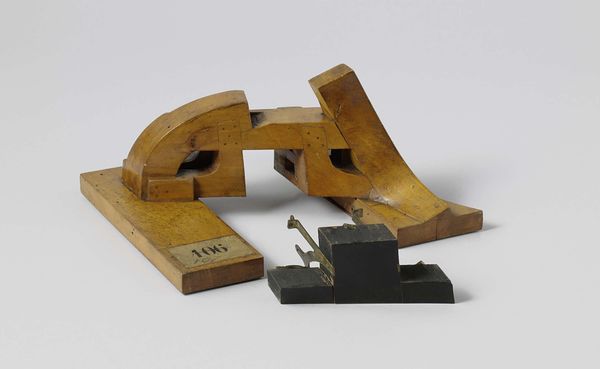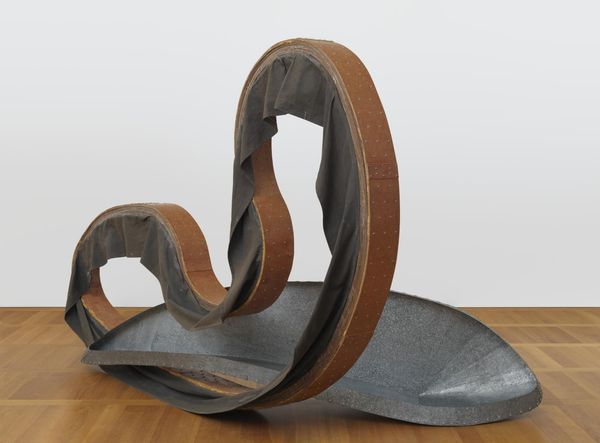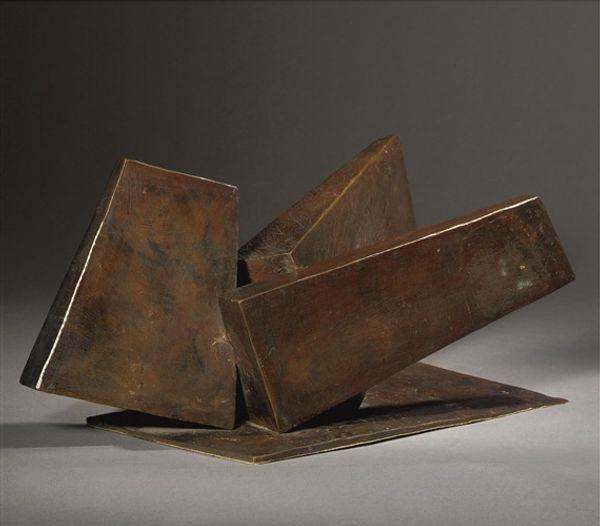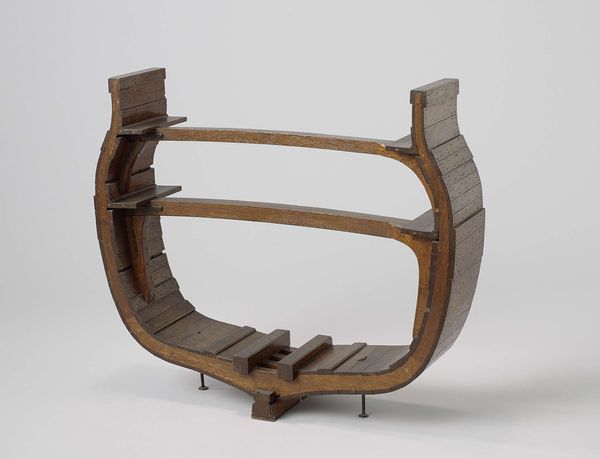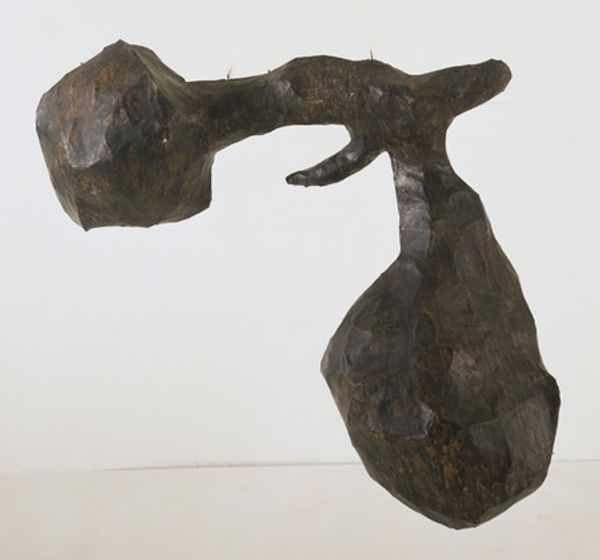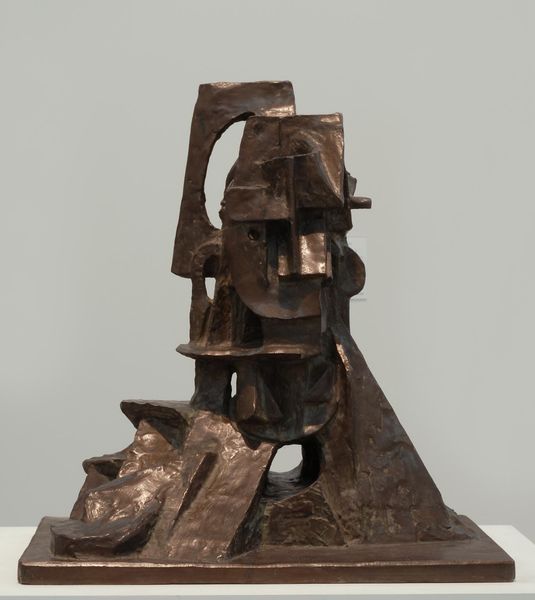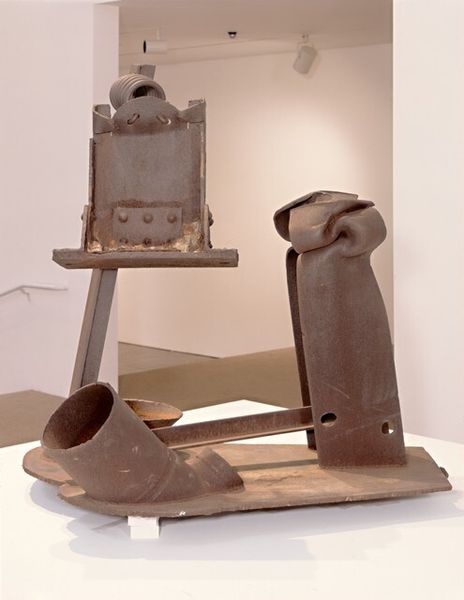
Dimensions: object: 546 x 698 x 400 mm, 160 kg
Copyright: © DACS, 2014 | CC-BY-NC-ND 4.0 DEED, Photo: Tate
Editor: Eduardo Chillida's "Modulation of Space I" at the Tate is a compelling iron sculpture. Its rust-colored surfaces and interlocking forms give it a strong, almost primal feel. What symbolic weight do you see in these shapes? Curator: Notice how the metal resists being tamed, even as it forms defined shapes. Iron, deeply connected to human industry, still carries primal associations. The curves and angles represent a negotiation between human control and the material's inherent nature, echoing our constant modulation of the world around us. Don't you think? Editor: I see that now; the tension between the geometry and the raw material is really interesting. Curator: Exactly, that tension is key! It speaks to our attempts to shape space and, ultimately, our environment, leaving a lasting impression on cultural memory.
Comments
tate 6 months ago
⋮
http://www.tate.org.uk/art/artworks/chillida-modulation-of-space-i-t00750
Join the conversation
Join millions of artists and users on Artera today and experience the ultimate creative platform.
tate 6 months ago
⋮
Chillida began to forge sculptures from solid iron in 1951. The darkness of iron, he suggested, was more suited to the sombre culture of his Basque homeland than more traditional sculptural materials such as plaster or marble. He believed that the final shape of the work could be determined only through the process of working directly with this resistant material. Discussing the group to which this work belongs, Chillida wrote that he ‘sought a more fluid and modulated dialogue between material and space than in other works of mine.’ Gallery label, February 2005
